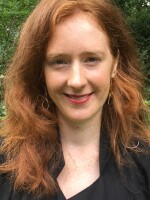A group of local middle schoolers is helping their neighbors prepare for April’s solar eclipse with a series of eclipse safety and science presentations.
The "solar eclipse ambassadors" from Holderness Central School recently shared their findings with town officials.
“So this shows the sun, earth, and the moon - and when the moon comes in between the earth and the sun, it casts a shadow,” said Oliver, one of the students, as he showed off a 3D model of the earth orbiting around a sun, illuminated by a lightbulb.
On April 8, the moon will be in our sky during the day — and it will be at just the right angle and path on its orbit so that when it passes between the earth and sun, its shadow will fall on parts of the U.S. The sun will be fully blocked in far northern New Hampshire.
“The moon is in the new moon phase," Oliver said. "And I thought that was really cool, because I would think that would be in the full moon phase, it’s blocking the sun – totally.”

Sophia Daigneault, the group's leader, says she and her classmates learned about solar system basics in seventh grade.
“So we had a little bit of an understanding and we knew all the moon phases and things like that," she said. "But we didn't fully understand like eclipses and like how to safely watch them and how they work and things like that."
How to watch the eclipse safely is a big part of the students’ presentation, which they’ve delivered at other venues, including the McAuliffe-Shepard Discovery Center.
The school district bought eclipse glasses for every student and teacher. Seventh-grader Aurora Ricker says these are essential, because UV rays can damage your eyes.
“Normally, if you tried to look up the sun, your body would have would react by having you flinch or look away,” she said. “But because most of this sun's light will be blocked by the moon, we won't have that urge to turn away.”
The only place in the state where it will be safe to take off the glasses during the eclipse is in the path of totality, near Pittsburg, when the moon completely blocks the sun for about three minutes.
A video of the students' presentation is on the New Hampshire Department of Education website, along with other educational material about the eclipse.






